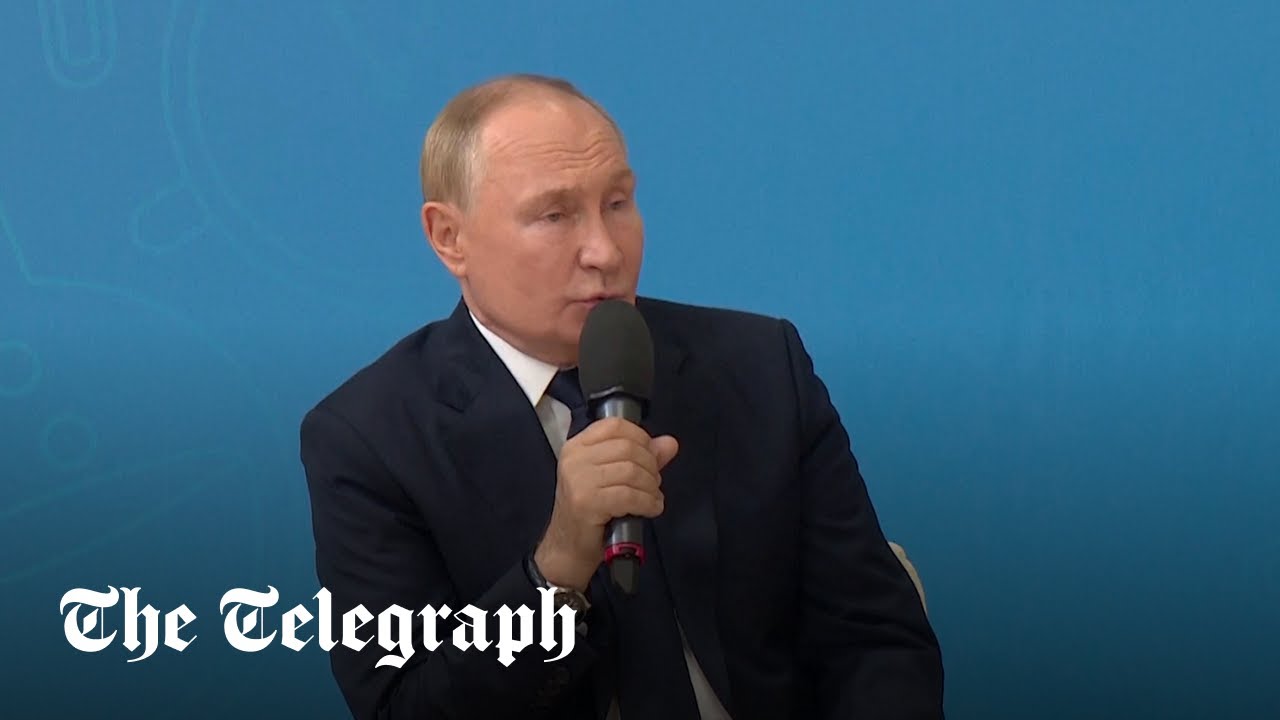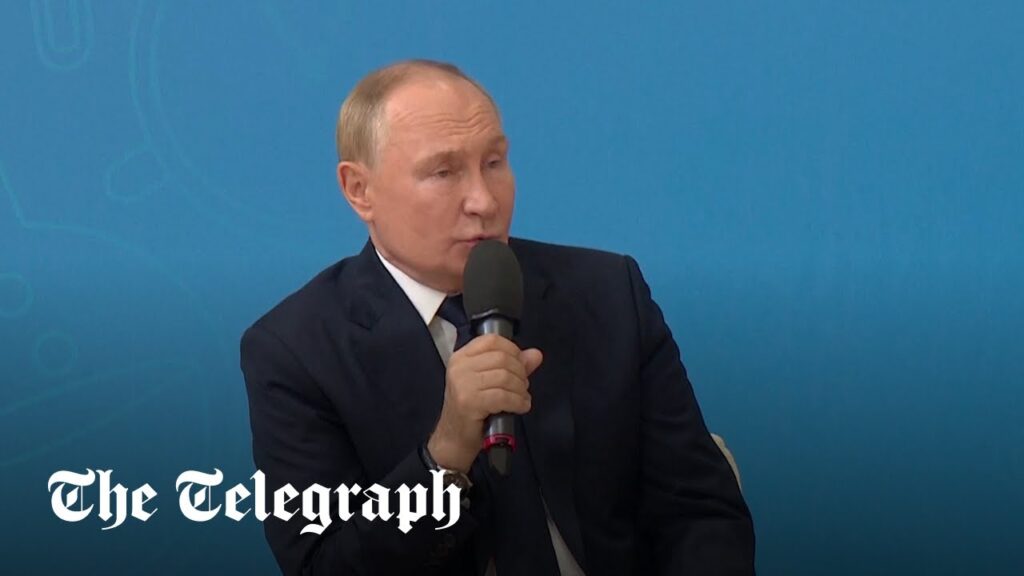
If China is really concerned with reclaiming territory, why not focus on territories ceded to Russia in the 19th century instead of Taiwan?
Taiwan President Lai Ching-te Recently asked that question. And it must be said that it would probably be easier for China to take away a large part of Russia than to invade Taiwan.
With so many Russian troops stationed in Ukraine, it’s hard to imagine Putin having anything left to do about it should China decide to move north. At one point last year the then British Defense Minister Ben Wallace said 97 percent of Russian forces are believed to be in Ukraine. The situation doesn’t seem to have changed much: when Ukraine began infiltrating Russia’s Kursk Oblast, no regular troops could be found for defense. Instead, teenage soldiers were thrust into the fighting while Russia’s regular troops remained on the frontlines in the southwest.
Before invading Ukraine in 2022, Russia had about 4,780 artillery pieces. China has more than 3,000 self-propelled guns and an additional 900 towed pieces, clearly more than Russia is likely to divert to the Far East.
When it comes to tanks, Russia has about 2,060, but China has a vast superiority with 4,700 main battle tanks, plus another 1,250 light tanks and 1,200 assault guns. In terms of armored fighting vehicles, Russia’s 7,080 are overshadowed by China’s more sophisticated force of more than 8,000 infantry fighting vehicles and 3,600 armored personnel carriers. You get the picture.
China is building up its military on a scale that Russia can’t match. The People’s Liberation Army ground forces, with about 965,000 active-duty personnel, are significantly larger than Russia’s ground forces, which have about 550,000 active-duty personnel. And Russian air/ground forces are almost entirely committed in Ukraine.
To give you a good idea of military industrial complex capabilities, while Moscow had to rely on France to build two Mistral-class helicopter carriers — only to see the deal fall through after the invasion of Crimea — China is busy building its own fleet. His own yard. China is churning out warships at a rate that should alert not only Russia but the entire world. From new aircraft carriers to advanced destroyers and submarines, China didn’t have to ask anyone else for help.
This march toward better military technology is perhaps best symbolized in China’s new J-20 fighter jet, which most analysts accept as a de facto fifth-generation fighter. This is in stark contrast Russia’s Su-57, an effectively upgraded design from decades ago that is only courtesy of the fifth generation..
The Su-57, despite its maneuverability, is not particularly stealthy. The Russian jet has much larger radar cross-section hotspots than the J-20, which was designed with greater emphasis on reducing its radar signature. The J-20’s stealth characteristics are more in line with American fifth-generation fighters such as the F-22 and F-35. On top of that, the J-20’s advanced avionics and superior short-range air-to-air missiles, like the PL-10, give it an edge against anything Russia can field. The jet is a stark symbol of the technological gap between China and Russia.
China may not yet be ready to launch a complex air-sea invasion of Taiwan, backed by the mighty USA. But he would have no real difficulties in invading Russia on land.
Putin, for his part, is keenly aware of the strategic importance of Russia’s Far East, particularly Vladivostok. It is the headquarters of Russia’s Pacific Fleet and a crucial gateway to the resource-rich Arctic. However, the region has long been disputed by Russia and China, with grievances dating back to the 19th century when the Qing dynasty ceded much of the land to Russia after the Second Opium War. Despite the passage of time and several treaties, many Chinese nationalists still see the region — which includes Vladivostok, Russia’s gateway to the Pacific — as land that was unjustly taken from China.
In recent years, Beijing has subtly but surely kept the issue alive. In August 2023, China’s Ministry of Natural Resources published a map provocatively marking Bolshoy Usurisky Island on the Sino-Russian border as Chinese territory. This was despite an agreement between Russia and China to divide the island nearly 20 years ago. An earlier version of the map also renamed some parts of Russian territory, including Vladivostok, with Chinese names – hinting at Beijing’s lingering claims.
Beijing has declared itself a “near-Arctic state” and is becoming increasingly active in Arctic affairs, eyeing the Northern Sea Route to Russia’s Arctic coast. Control of Vladivostok and its surrounding region would not only give China a stronger foothold in the Pacific but better access to this Arctic shipping lane, which could reduce the distance between Europe and Asia by nearly 40 percent.
If you want evidence of Russia’s increasingly subordinate role in relations with China, President Vladimir Putin recently announced that his “little” – a reference to his younger family members – is fluent in Mandarin. Speaking at a school in Kyzyl, Putin casually mentioned that these “little people” spoke Chinese fluently. Although this may seem like an offhand comment, it’s not hard to see the deep ramifications of such comments from someone who almost never talks about his family.
It makes you wonder – maybe Putin is starting to recognize which way the wind is blowing in this relationship?
As China continues to increase its influence in the Russian Far East and beyond, the idea of Russia’s next generation being fluent in Chinese takes on symbolic weight. It’s a subtle yet telling indicator of a changing landscape, where Russia, once a global superpower, is increasingly playing a junior partner to China. Perhaps Putin’s “little people” are embracing the new reality sooner than most.
China’s path to greater influence in the Pacific appears increasingly unimpeded.
Post China may struggle to invade Taiwan. He would have no trouble invading Russia appeared first The Telegraph.
